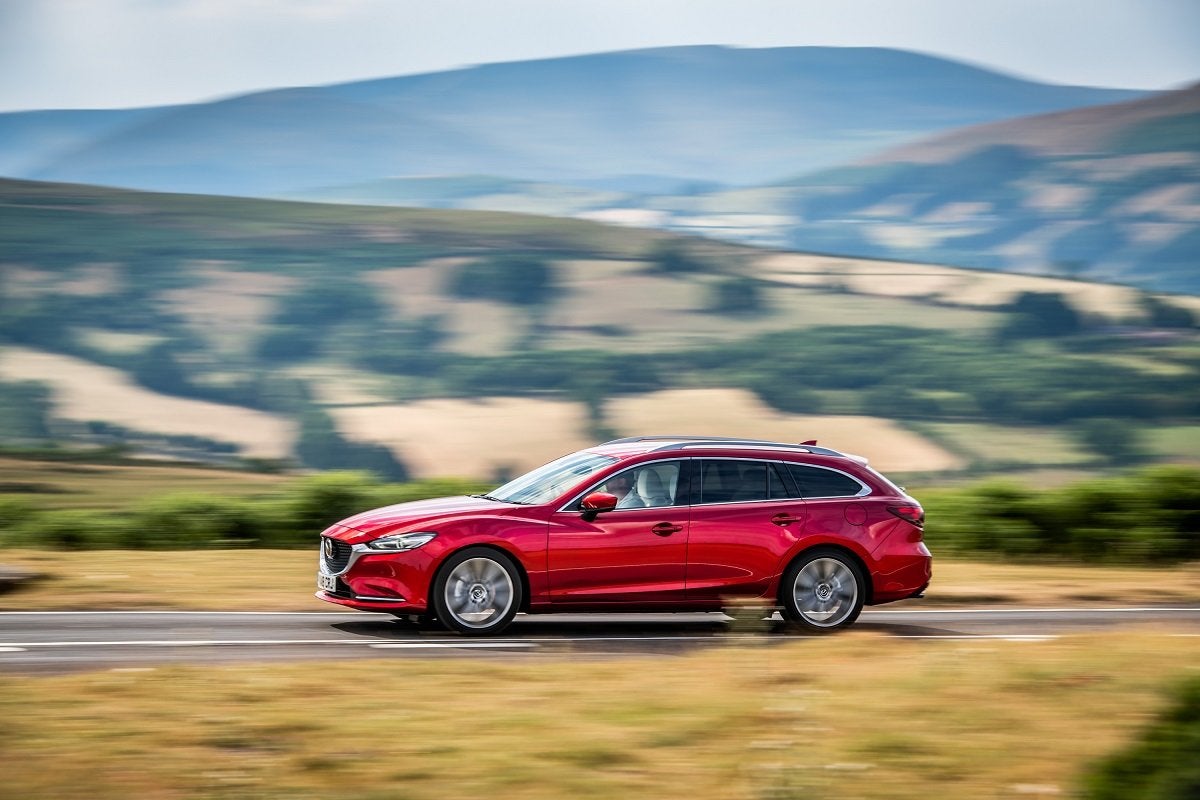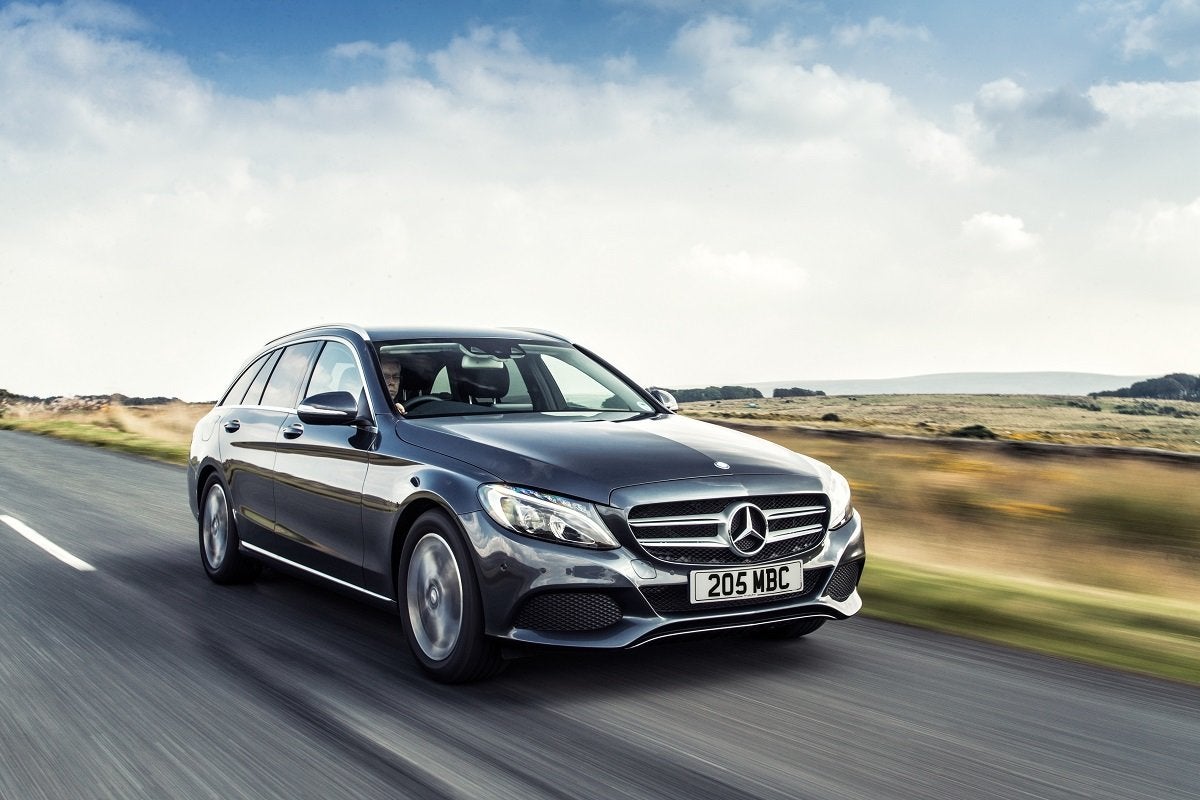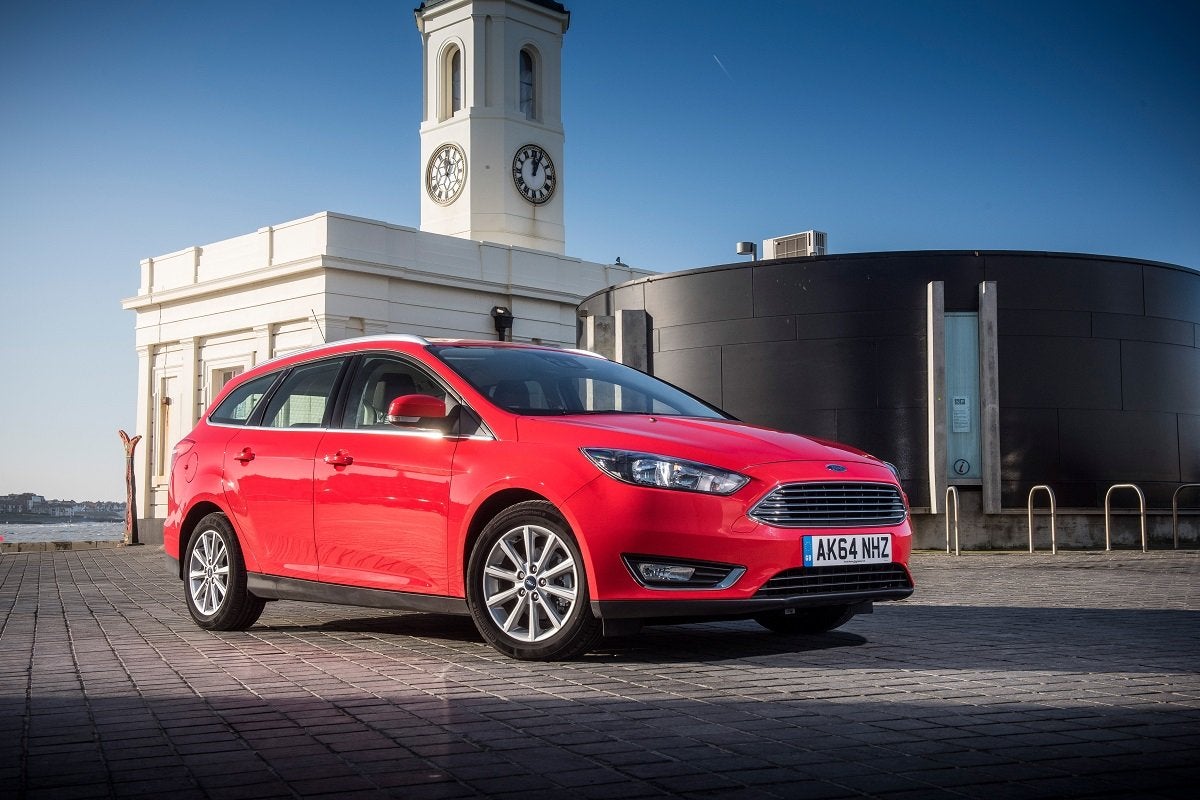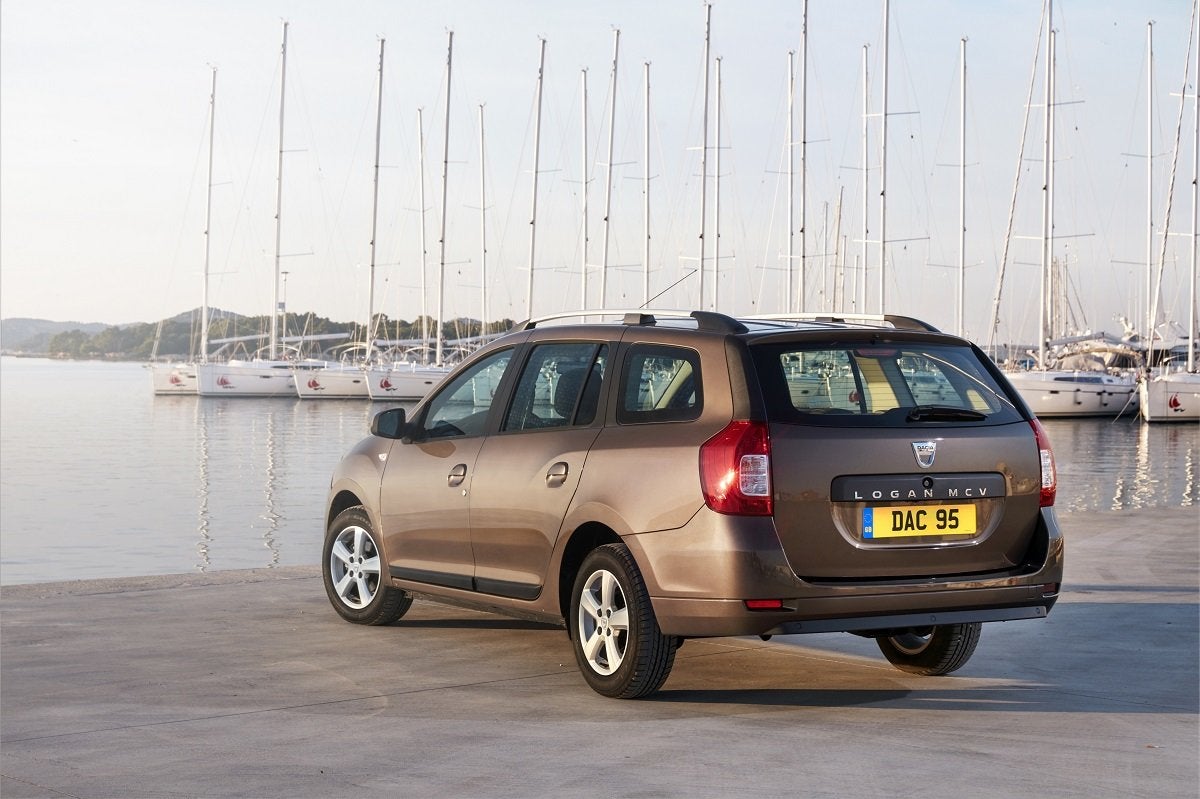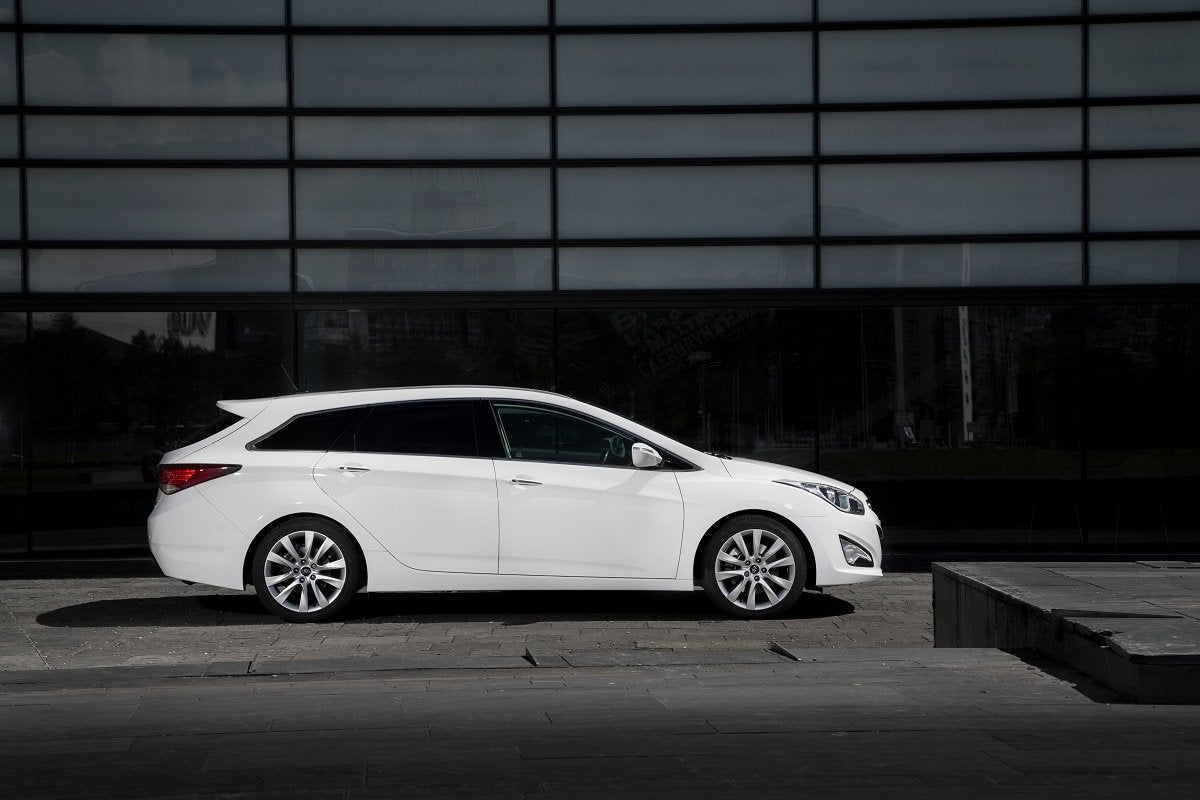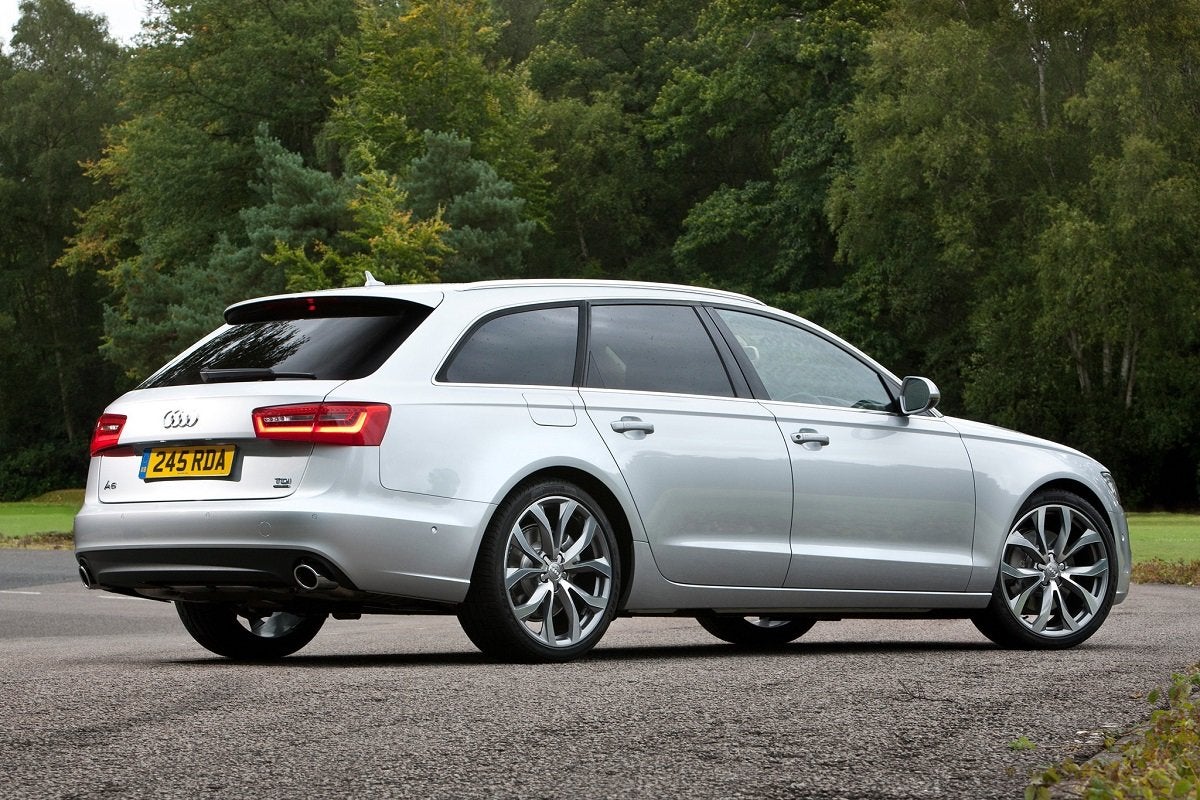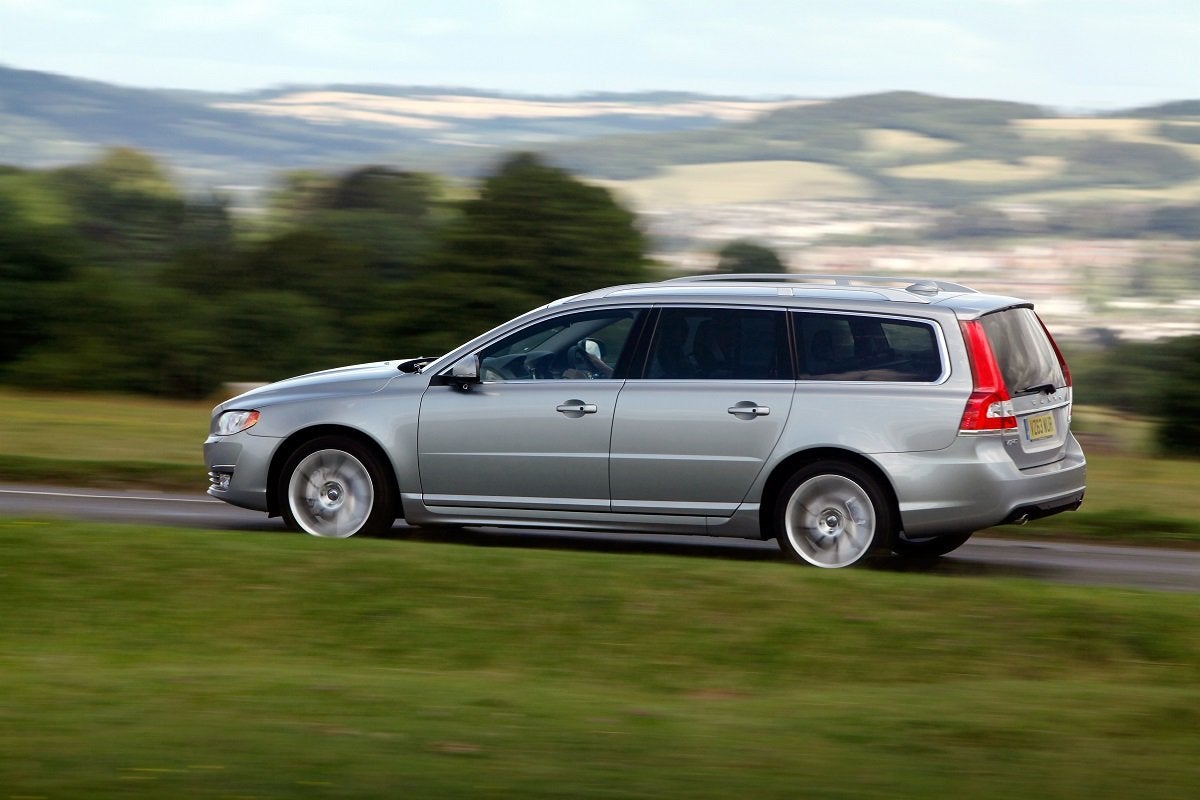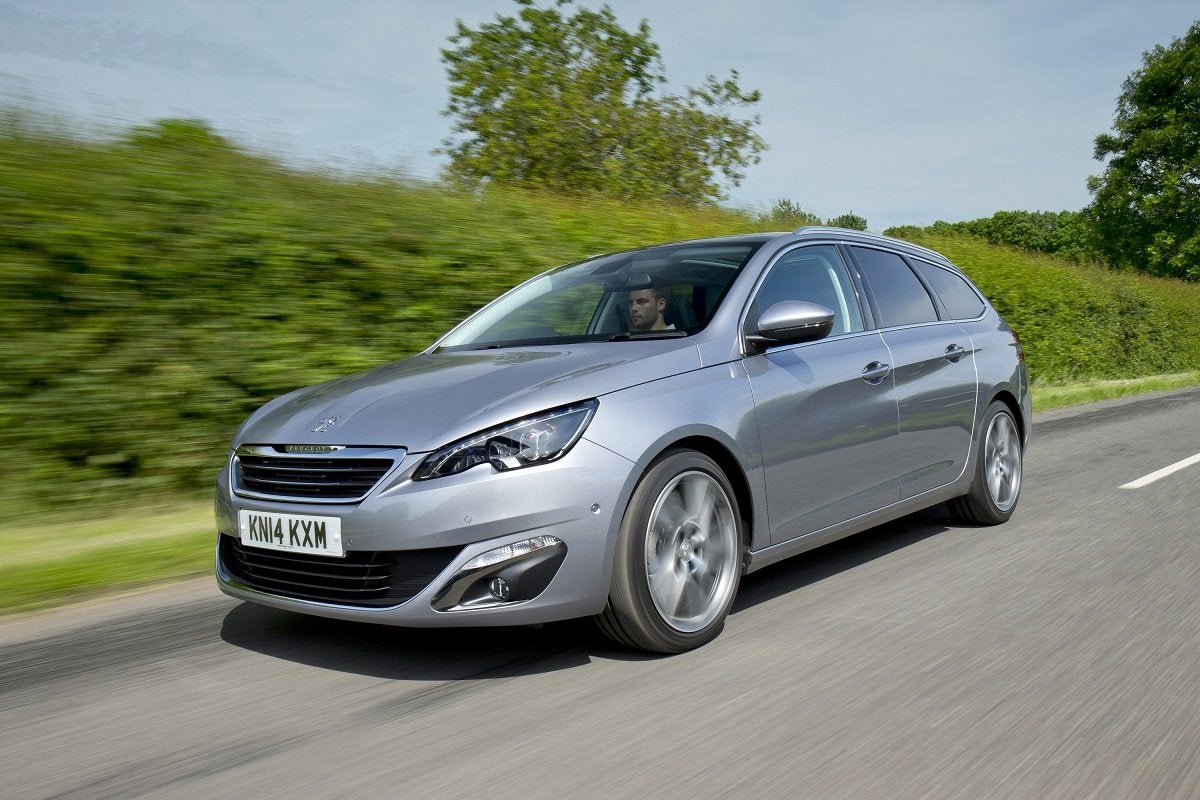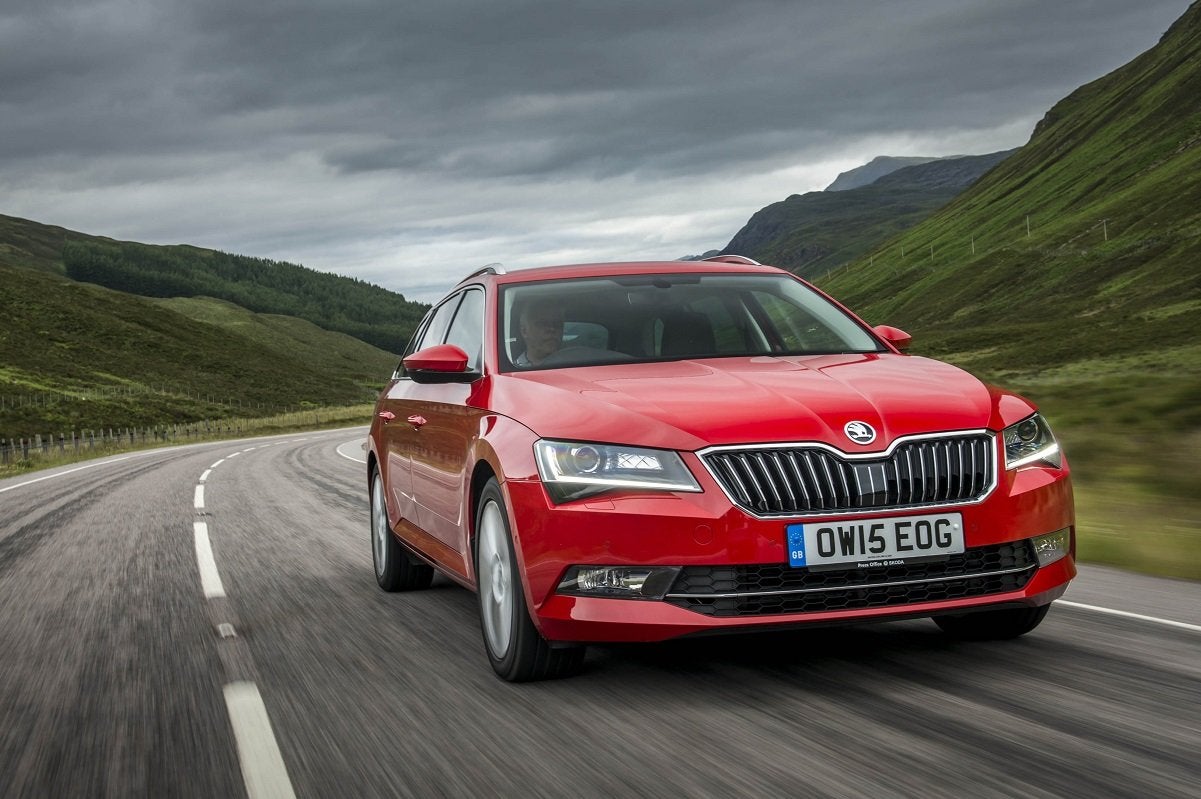An estate car offers space and versatility without the bulk of an SUV or MPV body. The best cars in this class have huge boots and can swallow heaps of cargo leaving plenty of room for passengers.
There are plenty of examples to choose from at our budget of less than £10,000, many of which are stylish, too. You’ll also find lots of practical technology in these cars, such as electrically opening tailgates, under-floor storage, and rear seats that fold at the touch of a button. Read on for our pick of the best.
Best Used Estate Cars Under £10k in 2025
- Mazda 6 Tourer (2014-2023)
- Mercedes-Benz C-Class Estate (2014-2021)
- Ford Focus Estate (2014-2018)
- Dacia Logan MCV (2013-2020)
- Hyundai i40 Tourer (2011-2019)
- Audi A6 Avant (2011-2018)
- Volvo V70 (2007-2016)
- Peugeot 308 SW (2014-2021)
- Vauxhall Insignia Sports Tourer (2017-2022)
- Skoda Superb Estate (2015-2024)
Mazda 6 Tourer (2014-2023)
The Mazda 6 Tourer’s good looks mean it really stands out next to more sober rivals such as the Ford Mondeo and the Volkswagen Passat. Its sleek exterior is matched by an equally appealing interior. Open the tailgate, and you’ll find a boot more than capable of handling a weekend of kids’ sporting activities, the weekly supermarket sweep or a holiday trip. Mazda makes it easy to extend this sizeable space with a load cover that’s quick to lift out, and it can be stored neatly under the boot floor to prevent it from rattling around. A touch of a button tips the rear seats, which are split, so one side is wider than the other to help with carrying passengers and longer loads.
Most 6 Tourers come with Mazda’s refined 148bhp 2.2-litre turbodiesel engine and slick six-speed manual gearbox. For an even more laid-back drive, the more potent 173bhp diesel with automatic transmission is also an option.
Mazda 6 Review
Mercedes-Benz C-Class Estate (2014-2021)
Your neighbours will think you’ve hit the jackpot if you park a Mercedes C-Class Estate outside. This elegant load lugger has all of the panache you’d expect from a car with the premium German badge, but it’s also available for less than £10,000.
As with its bigger brother, the Mercedes E-Class Estate, the C-Class’s selling point is boot space: there’s more on offer in its sizeable loadbay than in either of its biggest rivals, the Audi A4 Avant and the BMW 3 Series Touring. It’s also a very comfortable car in which to cover serious mileages, even if it can’t quite match the BMW for outright entertainment.
The tailgate is broad and tall, while the rear seat divides into three sections for added versatility and, with all of the back seats folded down, there’s a long, flat floor. The C-Class can be had with a variety of petrol engines, plug-in hybrid and diesel engines, and the latter is the most common; gruff but economical, the 2.1-litre unit is powerful enough for most, but if you want something smoother and with more clout, you might prefer to upgrade to the excellent V6 diesel.
Mercedes C-Class Review
Ford Focus Estate (2014-2018)
The Ford Focus has the lot. It rivals the Volkswagen Golf for quality, the Mazda 3 for fun behind the wheel, and has the measure of the Vauxhall Astra on affordability. There’s a Focus Estate to suit every budget and every need, from frugal to fast.
Our £10,000 budget could get you into either the latest Mk4 generation Focus with a higher mileage, or a lower mileage Mk3. We'd lean towards the latter, and specifically a version of that car that came after the major facelift in 2014, which gave the Focus a classier front end and improved equipment. Later versions of these models should still have plenty of life left in them as family or business workhorses.
The big boot capacity is helped by the estate’s squared-off shape, so the Focus can hold a lot more than you might think, even if the boot isn't quite as huge as a Skoda Octavia Estate’s.
The Focus has plenty of other strengths thanks to its wide range of engines. We’d take the 1.0-litre 123bhp petrol unit if your driving mostly consists of shorter journeys in town, because it’s perky and easy on fuel. Just keep in mind that to preserve this engine’s reliability, it’s imperative that it’s serviced on time and using the correct oil; the timing belt must be changed every 10 years, too — and it’s an expensive job. The 1.5-litre TDCi turbodiesel is perfect for higher mileage drivers, courtesy of its claimed 72mpg economy, while the 2.0-litre diesels offer a good blend of long-distance frugality and mid-range grunt.
Ford Focus Review
Dacia Logan MCV (2013-2020)
The Dacia Logan MCV is one of the best kept secrets in the estate car world. For considerably less than our budget, you could drive away in a late-model example with just 20,000 miles on the clock. That’s about as close to a new car as it gets for this money.
With that sort of value, the Logan makes a lot of sense, and the case for it is even better when you peek in the boot: MCV stands for ‘Maximum Capacity Vehicle’ and it lives up to the name. There’s as much load space in here as you’ll find in most cars from a couple of classes above, yet the Logan has supermini running costs. Fold the 60/40 split rear seat back, and there’s as much room in the Dacia as in a Volkswagen Passat Estate, although it’s a shame the boot only opens with the ignition key or a lever by the driver’s seat, because there’s no button or catch on the tailgate itself.
There are two petrol engines and one diesel engine, and our favourite is the more powerful 0.9-litre TCe 90 turbo petrol, as it has enough clout to cope with loads and it’s quieter than the diesel.
Dacia Logan MCV Review
Hyundai i40 Tourer (2011-2019)
Hyundai was looking to wrong-foot the estate car establishment when it launched the i40 Tourer in 2011, targeting models such as the Peugeot 508 SW and the Toyota Avensis. Chiselled styling helped it stand out, while lurking behind the boot lid was space to fit more bags and shopping than you could in a Ford Mondeo wagon.
Our budget will get you a last-of-the-line i40 with a good specification and sensible mileage. All i40s were fitted with lots of kit from new, but aim for a Style or Premium model for more toys for your money. Most i40s are fitted with the 1.7-litre CRDI turbodiesel in 115bhp or 136bhp forms. Choose the more powerful motor for better performance and refinement.
Hyundai i40 Review
Audi A6 Avant (2011-2018)
The Audi A6 Avant is a car that defines its class like few others. Sleek and elegant, many choose it over the BMW 5 Series Touring or the Mercedes E-Class Estate. It can be had with Audi’s quattro four-wheel drive for year-round sure-footed travel, or there’s the Allroad version, which has raised suspension and exterior cladding for a bit of off-road rambling.
The A6 Avant’s boot has opera house levels of space and there are no fancy storage solutions or nooks claiming to offer more room – it simply offers a vast rectangular box, which can be augmented by tumbling forward the divided rear seats. The luggage cover is clever, though, because it has an integrated screen to stop anything toppling from the boot into the cabin. Further forward, the interior is about as high-quality as they come, and there’s plenty of leg- and headroom.
Our budget will just get you into a clean example of the previous generation of A6 Avant with the 177bhp 2.0-litre diesel engine and in our preferred SE Ultra trim, which offers an official 61mpg.
Audi A6 Review
Volvo V70 (2007-2016)
Volvo and estate cars go together like Sweden and Abba, and the V70 is one of the finest load-luggers the company has ever made. The third generation arrived in 2007, alongside its XC70 all-wheel-drive sister, which was identical inside. Both are superb at swallowing huge amounts of luggage.
The squared-off shape of the V70’s rear (far more so than in the smaller Volvo V60) helps here, and most come with an electrically-operated tailgate to make life easier. The boot floor also has a lift-up divider with an elasticated holder to keep delicate items in place. Many V70s have a built-in dog guard to keep the family pet safe, while the rear seats tip down to leave a broad, long and flat floor.
Comfort takes precedence over dynamics in the Volvo, and it’s happiest when cruising. It does this very well with any of the available engines, although the MPG-minded 1.6-litre diesel is a little short on puff. The best balance is the 2.0-litre diesel with an automatic gearbox, so we’d look for this engine in SE Lux trim — easily attainable for our budget.
Search for a Volvo V70 on CarGurus
Peugeot 308 SW (2014-2021)
The Peugeot 308 SW should be on any small estate buyer’s list of used cars alongside the Honda Civic Tourer, the Kia Ceed Sportswagon, the Seat Leon ST and the Volkswagen Golf Estate, all of which are similar in size. We particularly like the 308 because, with the rear seats upright, its boot is one of the biggest in its class, so you can pack in all the holiday suitcases and passengers with ease.
A one-touch mechanism makes folding the two-piece rear seat as simple as possible, and it frees up a vast load bay with a flat floor. Another neat touch is the storage under the boot carpet for the load cover, which solves the problem of where to put it when it’s not in its usual position.
The SW enjoys the same supple suspension as the 308 hatchback, so you’re treated to a cushy ride and agile handling, rendering it a great all-rounder. Within our budget, there’s a choice of 1.2-litre petrol and 1.6 (or later 1.5) diesels. Choose a five-year old 308 SW in GT Line trim with around 50,000 miles, which should come in just under budget, and you’ll get a lot of car for your money.
Peugeot 308 Review
Vauxhall Insignia Sports Tourer (2017-2022)
If it’s great value you’re after, then it’s hard to argue with the Vauxhall Insignia Sports Tourer. Here’s a large, roomy estate car with plenty of standard equipment that will lap up big motorway trips, yet it costs the same as many smaller wagons. Our budget will bag you a 2019 1.5 petrol Design trim with less than 50,000 miles and all the luxury and practical kit you could want.
The Insignia Sports Tourer also has a whopping boot, which is quickly extended by tipping the rear seats down flat. Smooth sides make it a doddle to slide bulkier items in and out, and the tailgate lifts up high. Both petrol and diesel engines are available in the Insignia, with the 1.5 petrol being arguably the best for its balance of price, power, refinement and fuel economy.
Vauxhall Insignia Review
Skoda Superb Estate (2015-2024)
Compile a list of everything you need in a family car and you’d come up with the Skoda Superb Estate. It has a massive boot that’s more generous than the Audi A4 Avant and the Volkswagen Passat from fellow VW Group brands. The space is deep and the sides are smooth, so there’s nothing to snag on when you’re loading big or heavy items.
A ski hatch helps with the Superb’s practicality, and the 60/40 split rear seat is quick and simple to tip forward, freeing up a cavernous load area, so if you need anything more than this, you should buy a van. In the cabin, there are similar amounts of head- and legroom and comfort, and the Superb takes the same approach to its driving experience. Some will prefer the sportier feel of a BMW 3 Series Touring, but the Skoda is grippy, precise, and vice-free.
There is a range of petrol and diesel engines to choose from, with manual and DSG automatic gearboxes on offer. We’d go for the 2.0-litre turbodiesel with 148bhp for its blend of power and fuel economy. Reckon on getting a 2017 2.0 TDI SE Technology model with 80,000 miles for our £10,000 budget, or a higher-spec SE L with a few more more miles on the clock. Alternatively, if you wanted many of the same virtues but were prepared to sacrifice a little in outright practicality in favour of something faster and a little more sporty, you could opt for the smaller Octavia Estate, which is also available in high-performance vRS form.
Skoda Superb Review

